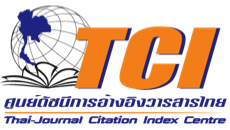Discourse Analysis on the Land Use between the Government and Thai People: Case Study of Thap Lan National Park and Kaeng Krachan National Park
Abstract
The objectives of this study are to 1) study the occurrence of practices in the discourse on the land use in Thap Lan National Park and Kaeng Krachan National Park, 2) study the operation of overlapping land management between the government and Thai people, 3) study the obstruction process to treat people as the outsiders. This research is qualitative research using the in-depth interviews on the informants divided into 3 groups; tourist, tourist operators in the areas of Thap Lan National Park and Kaeng Krachan National Park, and the relevant government officials. The research results reveal that when the government plays the role in benefiting the land by virtue of the government’s power according to the main discourse aiming to apply the same law to people to obey without being able to argue against the government only in accordance with the concept made for the maximum benefits of people. People are obstructed to participate in. This concept affects people living in the area of Thap Lan National Park and Kaeng Krachan National Park. The discourse in the land use has forced people to obey and to become marginalized. The minority has to sacrifice for most people. In terms of the government, the discovered problem is that the current enforced law is out-of-date. It does not keep up with the changing social context. The government uses the mainstream power to enforce the law rather than allow people to engage in problem solving.
Downloads












.png)


